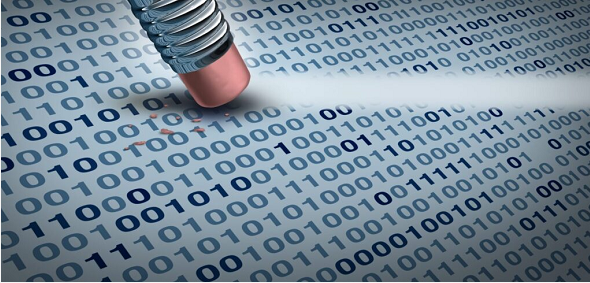
Data Sanitization is the purposeful practice of permanently and irreversibly erasing data on a storage medium, typically for regulatory or cybersecurity reasons. After data sanitization, a storage device will have no useful data left, and no data can be recovered, even with modern forensic and data recovery techniques. Data sanitization has always been an essential part of preserving sensitive company data, and secure erase has become an even more critical need as compliance rules have gotten more prominent and demanding in recent years. In this article, We will introduce two data erasure methods. Let us differentiate and understand the significance of ‘what is DoD 5220.22-M?’ and Gutmann’s method of wiping data in this Gutman method vs DoD review.
Table of Contents
What is DoD 5220.22 – M Method?
The Department of Defense 5220.22-M employs three overwrite passes (0s, 1s, and Random), as well as a 100 percent verification pass. DoD 5220.22-M ECE method, a 7-pass variant of the standard, was issued in 2001. It performs DoD 5220.22-M twice, with a third pass (DoD 5220.22-M (C) Standard) in between. Despite this, the three-pass approach remains the usual implementation. The following passes are included in the DoD 5220.22-M data erase method:
- Pass 1: Writes a zero and validates it.
- Pass 2: Writes a one and double-checks the write.
- Pass 3: Writes a random character and checks it.
What is the Gutmann Method?
Peter Gutmann invented the Gutmann technique in 1996, and it is one of various software-based data sanitization methods implemented in numerous file shredder and data destruction applications, overwriting current information on the storage device or other external hard drive. Unlike a standard file erasure, using the Gutmann method on a hard drive forbids all data recovery methods based on software that considers information on the drive and most found troubleshooting tools.
The Gutmann method employs a random character, rather than the zero indexes employed by other systems, for the first four overwrites and the last four rewrites but uses a sophisticated overwriting pattern from the fifth to the thirty-first overwrite. This function is overridden 35 times in total.
DoD 5220.22-M vs Gutmann Method: The Comparison
As we move forward, let us now compare the benefits of DoD 5220.22- M Standard and the Gutmann method. Let us start by emphasizing the benefits of DoD 5220.22-M and why it is most liked by the masses compared to the other methods.
- It is considered the best secure method to erase data from hard disk drives.
- It is credible, well-known, and is used in various industries.
- The efficiency and the credibility of DoD 5220.22- M make it stand apart from other competitors.
- The three-pass overwrite process takes the upper hand when compared to other methods.
- A verification process accompanies the final overwriting pass to add assurance to the data erasure process.
Now, we would clearly understand ‘What is DoD 5220.22 – M’ and the benefits offered. On the other hand, let us look at the Gutmann method and its benefits.
- Also considered one of the safest methods.
- Uses Pseudo-random values up to 35 times to overwrite, providing an overall assurance.
- Uses random values for the 1st and last four passes and a totally different, complex pattern for passes from 5 to 31.
Gutman method vs DoD: Estimated Wipe Time
How long does a DoD-level wipe take?
That same 20 GB hard disc will take the better part of a day to erase using a DoD-approved level of data erasure, which employs nine passes of random writes.
How long does a Gutmann wipe take?
It must be approximated based on the size of your drive; for example, a 1TB disc should take roughly 10 hours to wipe via USB 2.0. If you were to conduct a Gutmann wipe, it would take 350 hours or nearly two weeks.
With DoD taking the upper hand in the comparison, let us now look at how to use them in this review.
How to Wipe a Hard Drive with DoD?
To use the DoD 5220.22 – M advanced method to wipe the data, you should rely on the best DoD data wipe tool. After complete research, we have concluded to recommend Kakasoft File Shredder highly, which is powered by DoD 5220.22 – M erasure method. The Kakasoft file shredder is an advanced Windows tool that enables users to eradicate unwanted files with the help of the US DoD 5220.22 – M erasure method by overwriting them several times. The steps involved in using the File Shredder are:
1. Download the Free File Shredder on the official Kakasoft website and install it.
2. Once installed, you need to open the tool.
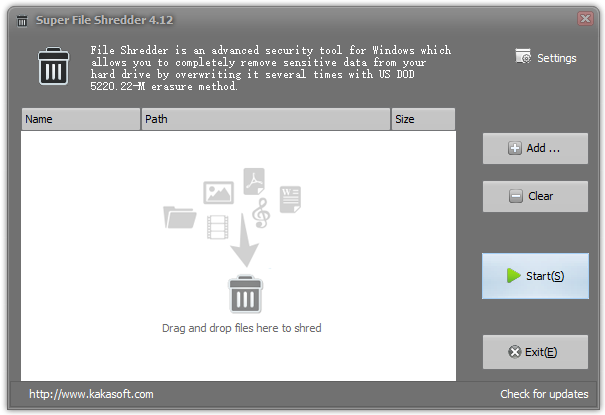
3. Simply drag the folder that you want to wipe and place it in the interface of the file shredder.
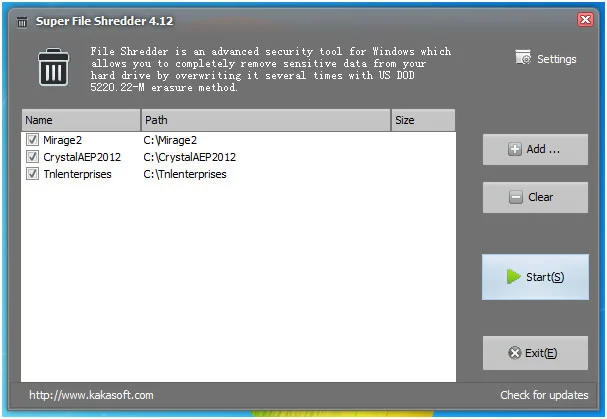
4. After placing, you need to hit “Start.”
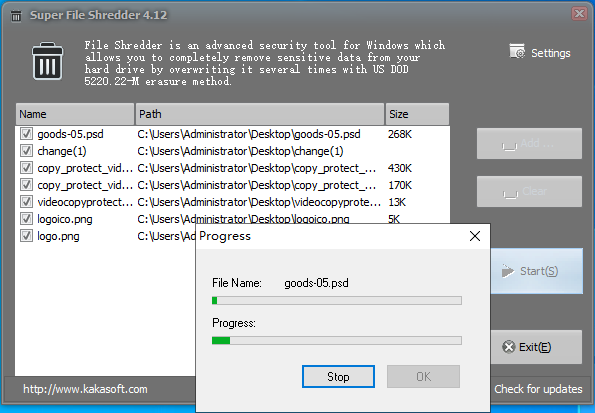
With DoD-powered erasure, the File Shredder does the work with the ease of time. Now, let us understand how to use the Gutmann method in this review.
How to Wipe a Disc Using Gutmann Method?
With the help of a reliable Gutmann wipe tool, follow the below steps to erase a drive with the help of the Gutmann method.
1. Start by downloading AOMEI Backupper Professional. Once installed, navigate to tools, and open the ‘Disk Wipe’ option.
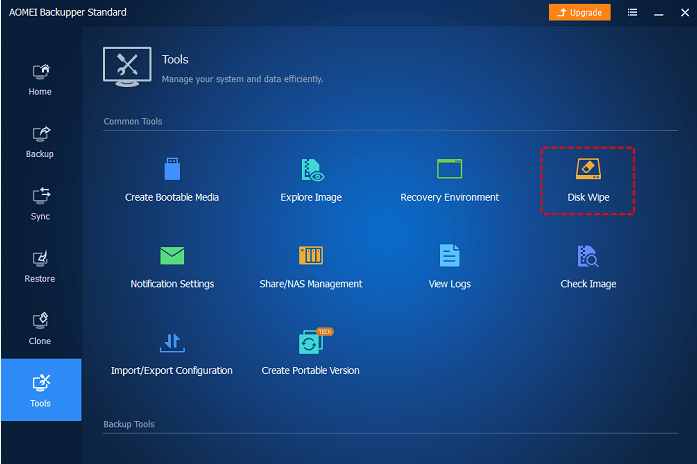
2. Click on ‘Wipe Disk’ and hit next.
3. Choose the specific disk that needs to be wiped and hit next.
4. In the methods list, choose the Gutmann method and hit start.
Conclusion
With this review, it is evident that the DoD 5220.22 – M erasure method outweighs the Gutmann method with many advantages and quick process. The primary reason for choosing DoD over Gutmann is the extremely slow process with the Gutmann method, which might even take weeks. However, both these methods aim towards the same goal but with different attributes. Another most asked question is, “Is DoD 5220.22 – M secure?” As mentioned above, both methods are extremely safe when used to wipe data from a disk.